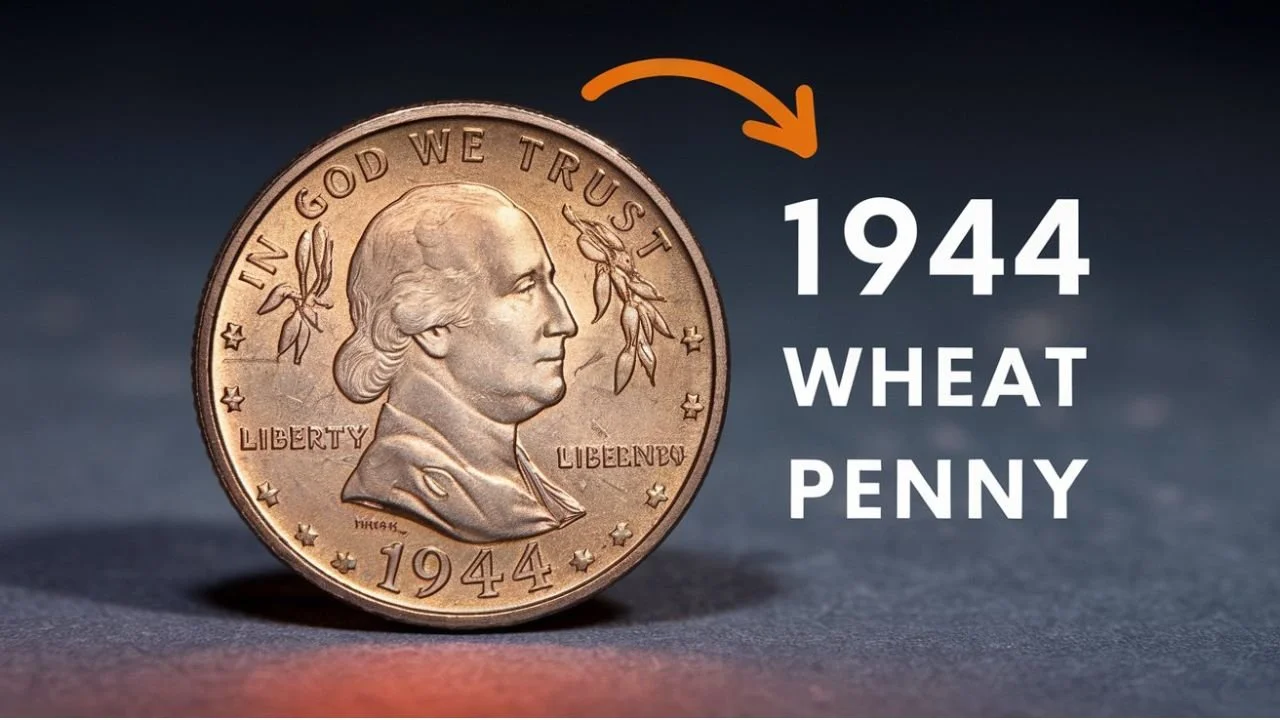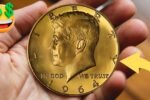This 1944 Wheat Penny with No Mint Mark is Extremely Rare
Most people see a penny and think it’s not worth much. It’s the smallest coin in value and often gets ignored. But did you know that one special 1944 Wheat Penny with no mint mark is considered extremely rare and could be worth thousands of dollars?
In this article, we’ll take a closer look at why this specific penny is so unique, how it came to be, and how you can check if you might have one hiding in your own coin collection or spare change jar.
What Is a Wheat Penny?
A Wheat Penny is a U.S. one-cent coin that was made from 1909 to 1958. The front of the coin shows a portrait of Abraham Lincoln, and the back has two wheat ears facing each other—hence the name “Wheat Penny.” These coins were made mostly of copper and are popular among coin collectors.
Wheat pennies are often easy to find in old jars, collections, or inherited boxes. Most of them are worth just a little more than face value, especially if they’re in poor condition. However, some rare years and mint types are worth much more—and the 1944 no mint mark version is one of them.
Why Is the 1944 No Mint Mark Penny So Special?
The reason this coin is rare is because of a wartime error and a change in metal composition.
Here’s what makes it so special:
-
World War II Metal Changes
In 1943, because of a copper shortage during World War II, the U.S. Mint made pennies using steel coated in zinc. These coins looked silver in color. But in 1944, they returned to making pennies out of copper using recycled ammunition shells. -
Steel Planchets Used by Mistake in 1944
A small number of 1944 pennies were accidentally struck using leftover steel blanks (planchets) from 1943. These steel pennies from 1944 are extremely rare. -
No Mint Mark Mystery
A mint mark tells us where a coin was made. In 1944, pennies were produced in Philadelphia (no mint mark), Denver (D), and San Francisco (S). The rare steel penny from Philadelphia has no mint mark, making it even harder to find and more valuable. -
Low Known Quantity
Very few of these 1944 steel pennies with no mint mark are known to exist. Some experts believe there are less than 30 in total, making them a collector’s dream. -
High Market Value
These rare coins have sold at auctions for tens of thousands of dollars, depending on their condition. One in top shape can even go over $100,000.
Overview Table: 1944 No Mint Mark Wheat Penny
| Feature | Description |
|---|---|
| Coin Type | Lincoln Wheat Penny |
| Year | 1944 |
| Mint Mark | None (Philadelphia Mint) |
| Metal Composition (common) | Copper (mostly recycled shell casings) |
| Metal Composition (rare) | Steel (error coin) |
| Known Steel Examples | Less than 30 (estimated) |
| Weight | About 2.7 grams (steel version) |
| Color | Silver-gray (if steel), red-brown (if copper) |
| Estimated Value | $30,000–$100,000+ (depending on condition) |
| Collector Demand | Extremely high |
How to Tell If You Have the Rare 1944 Steel Penny
Not all 1944 pennies are rare, so it’s important to know what to look for.
Here are the steps you can take to identify a rare 1944 no mint mark penny:
-
Check the Date
The coin must say 1944 on the front under Lincoln’s portrait. -
Look for the Mint Mark
No mint mark means it was made in Philadelphia. If there’s a “D” or “S,” it was made in Denver or San Francisco. -
Examine the Color
Regular 1944 pennies are brownish-red (copper). A steel one will look silver-gray and may even be slightly magnetic. -
Do the Magnet Test
Hold a small magnet near the coin. Steel coins stick to magnets. Copper ones do not. If your 1944 penny sticks, it might be the rare version. -
Weigh the Coin
A standard copper penny weighs about 3.11 grams. The steel version weighs closer to 2.7 grams.
If your coin matches these traits, it could be a valuable error coin. But don’t try to clean or polish it—it can ruin the value. Have it professionally inspected and graded.
What to Do If You Think You Found One
Finding a rare coin is exciting, but it’s important to follow the right steps to keep it safe and get it properly evaluated.
-
Handle It Carefully
Hold it by the edges and avoid touching the flat surfaces. -
Don’t Clean It
Cleaning a coin can scratch it or remove its natural finish, which lowers its value. -
Store It Safely
Use a plastic coin holder or soft cloth to store the coin and prevent damage. -
Get It Professionally Graded
Contact a reputable coin grading service like PCGS or NGC to have it authenticated and appraised. -
Research or Contact a Dealer
Look up recent sales of similar coins or talk to a trusted coin dealer for more information.
Final Thoughts
The 1944 Wheat Penny with no mint mark might look like any other old coin, but in reality, it could be one of the rarest pennies in U.S. history. It’s a small reminder that even everyday items can have hidden value. Whether it’s in a drawer, a change jar, or a family collection, this coin might be waiting for the right person to notice it.
Take a few minutes to check your old pennies—you never know what you might find. That one-cent coin could end up being worth more than a new car.
Frequently Asked Questions (FAQs)
1. Are all 1944 pennies valuable?
No. Only the rare steel versions are worth large amounts. Most 1944 pennies are copper and are worth just a few cents to a few dollars depending on condition.
2. What makes the 1944 steel penny so rare?
It was a minting mistake. The U.S. Mint accidentally used leftover steel blanks from 1943, making very few 1944 pennies in steel.
3. How can I tell if my 1944 penny is steel or copper?
Use a magnet. Steel pennies are magnetic. Copper pennies are not.
4. Can I sell a rare 1944 penny easily?
Yes. Many coin dealers and collectors are eager to buy rare coins. Auctions are also a good option for highly valuable ones.
5. Is it safe to clean old coins before selling them?
No. Cleaning coins can damage their surface and reduce their value. Always leave them in their original condition.




